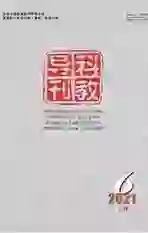课堂上“达成共识”不简单
2021-05-27李德强

科学课堂上,与寻找证据、训练思维、提出解释等环节相比,达成共识很容易被忽视,使教学缺乏深度。
达成共识通常是指通过协商取得一致意见。科学家在“做科学”的过程中,也会为自己的观点提供充分的证据和解释模型,并接受大家的质疑与评价,在此基础上再作出进一步的思考和研究,这实际上就是一个达成共识的科学活动。在科学研究的道路上,这样的活动并不是单向、一次性的,而是不断往复的。
从学生“做科学”的角度讲,教学的意义不仅仅在于简单地获取结论,而是通过展开达成共识的过程,使学生有机会参与交流、质疑、评价等活动,进而对科学是什么、科学探究是什么等有初步的认识。要想达到这样的目的,就要对“达成共识”的教学路径有清楚的认识,并以此为出发点来改进具体的教学。
达成共识是一个交流的过程,这和一般的漫无目的的聊天不太一样,它需要探究者围绕某个问题,提出自己的观点,并依靠证据对自己的观点进行阐释,在他人的质疑和评价中多次发表、完善自己的想法。可见,参与交流的学生都应该具备以下三个基本条件:要有自己的观点;要有支撑自己观点的证据,也就是用事实来证明观点的合理性、正确性等;要能够把自己的观点、证据等联系起来,通过一定的方式表达出来,让听者明白自己的观点是什么,是如何证明这些观点的。
这些条件实质上对前置教学中教师应该帮助学生重点关注什么,以及如何展开学习提出了要求,其要义就是提出观点并做好参与讨论的准备,这也正是达成共识所必需的基础。海森堡曾经说:科学扎根于交流,起源于讨论。作为创造性很强的科学活动,立足于交流的达成共识过程无疑是非常有教育价值的。
达成共识是一个不断往复的过程。和许多教师习惯了的“点对点”获得结论的方式不一样,达成共识会在证据与解释之间进行反复。也就是说,最后结论的得出,是大家在对前面的交流结果不断修正的基础上共同形成的。这一特点传达出了三个基本要求:一是允许观点存在不完整性、不準确性,但是要基于现有证据提出;二是可以通过不同的路径来证明自己的观点,但不能脱离研究的共同问题;三是在确证的前提下,他人的经验是可以为我所用的。概括地讲,往复是不断完善证据形成更加合理解释的过程,这也就从一定的角度对课堂教学的活动形态提出了新的要求,点状、线形以及异口同声的言语状态都不足以形成不断往复的达成共识过程,教师需要创造一种充满争论,类似于“茶话会”的解决问题的课堂形态。
构建达成共识的教学并不是简单的事情,因为在我们所看到的许多课堂中,大都“头重脚轻”,参与交流变成了走过场似的作秀,要么在获取证据阶段,其教学所指向的就是与结论一一对应的事实,几乎没有什么开放性可言,要么一旦学生讲出与期望结论相关的答案,教师就马上予以肯定,学生几乎没有再交流的可能。所以说,达成共识对科学的教学设计提出了很大的挑战:教师不仅要在教学思想上真正看到达成共识对培育学生科学素养的作用,而且要把握“不断往复”对获取证据的能力、解释证据的思维、参与交流的表达、回应质疑的思辨的要求,并以此进行教学的转变与改进。这样,学生在课堂上所获得的就远远不止那一点结论了。
李德强
人教鄂教版《科学》教材副主编
湖北省教育厅小学科学教学指导委员会副主任委员
湖北省宜昌市市管优秀专家
Reaching a Consensus in Class
is not Easy
LI Deqiang
中图分类号:G424 文献标识码:A DOI:10.16400/j.cnki.kjdkx.2021.02.004
LI Deqiang
Deputy Editor in Chief of Science Textbook of People's Education Hubei Education Press
Vice Chairman of Primary School Science Teaching Steering Committee of Hubei Provincial Department of Education
Excellent Expert in Yichang City, Hubei Province
In science class, compared with the links of finding evidence, training thinking and putting forward explanation, reaching a consensus is easy to be ignored, which makes the teaching lack of depth.
Reaching a consensus usually means reaching a consensus through consultation. In the process of "doing science", scientists will also provide sufficient evidence and explanation models for their own views, accept everyone's query and evaluation, and then make further thinking and Research on this basis. This is actually a scientific activity to reach a consensus. On the road of scientific research, such activities are not one-way, one-time, but constantly reciprocating.
From the perspective of "doing science" for students, the significance of teaching is not only to simply get conclusions, but also to make students have the opportunity to participate in communication, questioning, evaluation and other activities through the process of reaching consensus, so as to have a preliminary understanding of what science is and what scientific inquiry is. To achieve this goal, it is necessary to have a clear understanding of the "consensus" teaching path, and take it as a starting point to improve the specific teaching.
Reaching a consensus is a process of communication, which is different from the general aimless chat. It requires the explorers to put forward their own views around a certain problem, and interpret their own views by relying on evidence, and publish and improve their own ideas many times in the questioning and evaluation of others. It can be seen that students participating in communication should have the following three basic conditions: they should have their own views; they should have the evidence to support their views, that is, to prove the rationality and correctness of their views with facts; they should be able to connect their views and evidence, and express them in a certain way, so that the listeners can understand what their views are and how to prove them the point of view is correct.
In fact, these conditions put forward requirements for what teachers should help students focus on and how to carry out their study in front-end teaching. The essence of these conditions is to put forward ideas and be prepared to participate in the discussion, which is also the necessary basis for reaching a consensus. Heisenberg once said: science is rooted in communication and originates from discussion. As a highly creative scientific activity, the process of reaching consensus based on communication is undoubtedly of great educational value.
Reaching consensus is a process of constant repetition. Unlike many teachers' accustomed "point-to-point" approach to conclusions, consensus can be repeated between evidence and interpretation. That is to say, the final conclusion is formed by all on the basis of continuous correction of the previous results of communication. This characteristic conveys three basic requirements: one is to allow the view to be incomplete and inaccurate, but it should be put forward based on the existing evidence; the second is to prove his own viewpoint through different paths, but not to separate from the common problems of research; thirdly, the experience of others can be used for me before confirmation. Generally speaking, reciprocating is the process of constantly improving evidence formation and more reasonable explanation. This also puts forward new requirements for the activity form of classroom teaching from a certain angle. The point shape, line shape and the speech state of different voices are not enough to form a continuous and reciprocating consensus process. Teachers need to create a class full of controversy, similar to the "tea conference" to solve the problem.
The construction of consensus teaching is not a simple thing, because in many of the classrooms we have seen, most of them are "top heavy", and participation in communication has become a show. Either in the stage of obtaining evidence, the teaching points to the facts corresponding to the conclusions one by one, and there is almost no openness, or once the students speak the answers related to the expected conclusions The teacher immediately affirmed the case, and the students could hardly communicate with each other. Therefore, reaching a consensus poses a great challenge to the teaching design of Science: teachers should not only see the role of reaching a consensus in the cultivation of students' scientific literacy, but also grasp the requirements of "constantly reciprocating" for the ability to obtain evidence, the thinking of explaining evidence, the expression of participating in communication, and the speculative response to questions, so as to carry out the transformation and reform of teaching In. In this way, students get more than that conclusion in class.
